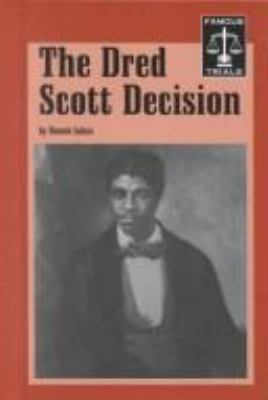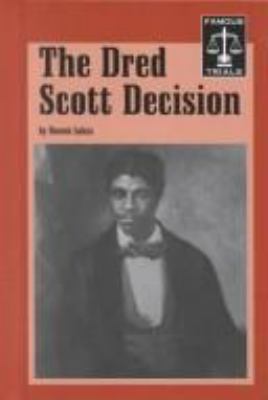-
-
[2019]., Calkins Creek, an imprint of Highlights Call No: HI-INT 345.7 BRI Edition: First edition. Availability:1 of 1 At Location(s) Summary Note: "In 1931, nine teenagers were arrested as they traveled on a train through Scottsboro, Alabama. The youngest was thirteen, and all had been hoping to find something better at the end of their journey. But they never arrived. Instead, two white women falsely accused them of rape. The effects were catastrophic for the young men, who came to be known as the Scottsboro Boys. Being accused of raping a white woman in the Jim Crow south almost certainly meant death, either by a lynch mob or the electric chair. The Scottsboro boys found themselves facing one prejudiced trial after another, in one of the worst miscarriages of justice in U.S. history. They also faced a racist legal system, all-white juries, and the death penalty. Noted Sibert Medalist Larry Dane Brimner uncovers how the Scottsboro Boys spent years in Alabama's prison system, enduring inhumane conditions and torture. The extensive back matter includes an author's note, bibliography, index, and further resources and source notes"--From the publisher's web site.
-
-
-- Brown versus Board of Educationc1998., Lucent Books Call No: 344.73 0798 Availability:1 of 1 At Location(s) Series Title: Famous trialsSummary Note: Provides a historical overview of the case that desegregated public education in the United States.
-
-
-- Brown versus Board of Education.By McNeese, Tim2006., Juvenile, Chelsea House Call No: 344.73 0798 Availability:1 of 1 At Location(s)Table of contents only Series Title: Great Supreme Court decisions.
-
-
c2007, Compass Point Books Call No: 344.73 0798 Availability:1 of 1 At Location(s)Table of contents only Series Title: Snapshots in historySummary Note: Examines the case of an African American girl whom the Board of Education refused admission into school.
-
-
-- Bush versus Gorec2003., Pre-adolescent, Enslow Publishers Call No: 342.73 Availability:1 of 1 At Location(s) Series Title: Landmark Supreme Court casesSummary Note: Chronicles the 2000 presidential election dispute and discusses each side of the "Bush v. Gore" Supreme Court case.
-
-
-- Cruzan versus Missouri2004., Rosen Pub. Group Call No: 344.73 04197 Edition: 1st ed. Availability:1 of 1 At Location(s) Series Title: Supreme Court cases through primary sources
-
-
2022., Adolescent, Scholastic Focus Call No: HI-INT 341.6 GOL Edition: First edition. Availability:1 of 1 At Location(s) Summary Note: "On December 7, 1941--'a date which will live in infamy'--the Japanese navy launched an attack on the American military bases at Pearl Harbor, Hawaii. The next day, President Franklin Roosevelt declared war on Japan, and the US Army officially entered the Second World War. Three years later, on December 18, 1944, President Roosevelt signed Executive Order 9066, which enabled the Secretary of War to enforce a mass deportation of more than 100,000 Americans to what government officials themselves called 'concentration camps.' None of these citizens had been accused of a real crime. All of them were torn from their homes, jobs, schools, and communities, and deposited in tawdry, makeshift housing behind barbed wire, solely for the crime of being of Japanese descent. President Roosevelt declared this community 'alien,'--whether they were citizens or not, native-born or not--accusing them of being potential spies and saboteurs for Japan who deserved to have their Constitutional rights stripped away. In doing so, the president set in motion another date which would live in infamy, the day when the US joined the ranks of those Fascist nations that had forcibly deported innocents solely on the basis of the circumstance of their birth. In 1944 the US Supreme Court ruled, in Korematsu v. United States, that the forcible deportation and detention of Japanese Americans on the basis of race was a 'military necessity.' Today it is widely considered one of the worst Supreme Court decisions of all time. But Korematsu was not an isolated event. In fact, the Court's racist ruling was the result of a deep-seated anti-Japanese, anti-Asian sentiment running all the way back to the California Gold Rush of the mid-1800s. Starting from this pivotal moment, Constitutional law scholar Lawrence Goldstone will take young readers through the key events of the 19th and 20th centuries leading up to the fundamental injustice of Japanese American internment. Tracing the history of Japanese immigration to America and the growing fear whites had of losing power, Goldstone will raise deeply resonant questions of what makes an American an American, and what it means for the Supreme Court to stand as the 'people's' branch of government"--Provided by the publisher.
-
-
c1992., Millbrook Press Call No: 133.4 3 097445 Availability:1 of 1 At Location(s) Summary Note: Describes the panic that swept through colonial Salem, Massachusetts, when the people were convinced that witches were among them and outlines the factors leading up to this episode.
-
-
2023., Adolescent, Roaring Brook Press Call No: 345.73 FLO Edition: First edition. Availability:1 of 1 At Location(s) Summary Note: "From John Florio and Emmy Award-winning writer Ouisie Shapiro comes a monumental YA nonfiction book about the heartbreaking case of Sacco and Vanzetti, two Italian immigrants who were wrongfully executed for murder. In the early 1920s, a Red Scare gripped America. Many of those targeted were Italians, Eastern Europeans, and other immigrants. When an armed robbery resulting in the death of two people broke headlines in Massachusetts, Nicola Sacco and Bartolomeo Vanzetti--both Italian immigrants--were quick to be accused. A heated trial ensued, but through it all, the two men maintained their innocence. The controversial case quickly rippled past borders as it became increasingly clear that Sacco and Vanzetti were fated for a death sentence. Protests sprang up around the world to fight for their lives. Learn the tragic history we dare not repeat in Doomed: Sacco, Vanzetti, and the End of the American Dream, an action-packed, fast-paced nonfiction book filled with issues that still resonate today"--Provided by the publisher.
-
-
c1997, Lucent Books Call No: 347.30287 Availability:1 of 1 At Location(s) Series Title: Famous trialsSummary Note: Traces the history of the landmark Supreme Court decision that defined the rights of slaves in the United States.
-
-
c1997., Lucent Books Call No: 347.30287 Availability:1 of 1 At Location(s) Series Title: Famous trialsSummary Note: Traces the history of the landmark Supreme Court decision that defined the rights of slaves in the United States.
-
-
-- Dred Scott vs. Sandford[2013]., General, ABDO Pub. Co. Call No: 342.7308 VAN Availability:1 of 1 At Location(s) Series Title: Landmark Supreme Court cases (ABDO Publishing Company)Summary Note: Discusses the history of the landmark Supreme Court case Dred Scott v. Sandford, that ruled that slaves were not protected by the Constitution and were not U.S. citizens, historical important because it is considered perhaps the worst decision ever made by the Supreme Court.
-
-
-- Engel versus Vitalec2001., Lucent Books Call No: 344.73 0796 Availability:1 of 1 At Location(s) Summary Note: Examines the 1962 Supreme Court case which decided that official prayers in public schools are unconstitutional, and discusses the continuing debate over the separation of church and state.
-
-
By Lock, Joanc2003., Mason Crest Call No: 347.73 Loc Availability:1 of 1 At Location(s) Series Title: Crime and detectionSummary Note: Explains how trials become famous, and reviews five criminal trials that gained attention throughout the world, including those of Sacco and Vanzetti, John George Haigh, Dr. Sheppard, Leopold and Loeb, and Richard Bruno Hauptmann.
-
-
2016., Bloomsbury Call No: 379.2 60973 Availability:1 of 1 At Location(s) Summary Note: In 1847, a young African American girl named Sarah Roberts was attending a school in Boston. Then one day she was told she could never come back. She didn't belong. The Otis School was for white children only. Sarah deserved an equal education, and the Roberts family fought for change. They made history. Roberts v. City of Boston was the first case challenging our legal system to outlaw segregated schools. It was the first time an African American lawyer argued in a supreme court.
-
-
-- Furman versus Georgiac2007., Juvenile, Chelsea House Call No: 345.73 0773 Availability:1 of 1 At Location(s)Table of contents Series Title: Great Supreme Court decisions
-
-
By Crowe, Chrisc2003., Juvenile, Phyllis Fogelman Books Call No: 364.152 3 09762 Availability:1 of 1 At Location(s)View cover image provided by Mackin Summary Note: Presents a true account of the murder of fourteen-year-old, Emmett Till, in Mississippi, in 1955.
-
-
2007., Pre-adolescent, Chelsea Call No: 345.73 056 Availability:1 of 1 At Location(s) Series Title: Great Supreme Court decisions.Summary Note: Presents the various trials of the Gideon v. Wainwright case, the final Supreme Court decision, and the impact of the case on the right to counsel for all defendants in criminal cases.
-
-
2016., Penguin Press Call No: 363.9 COH Availability:1 of 1 At Location(s) Summary Note: In 1927, the Supreme Court handed down a ruling so disturbing, ignorant, and cruel that it stands as one of the great injustices in American history. The court's decision allowed the sterilization of a young woman it wrongly thought to be "feebleminded," and championed the mass eugenic sterilization of undesirable citizens for the greater good of the country.





















